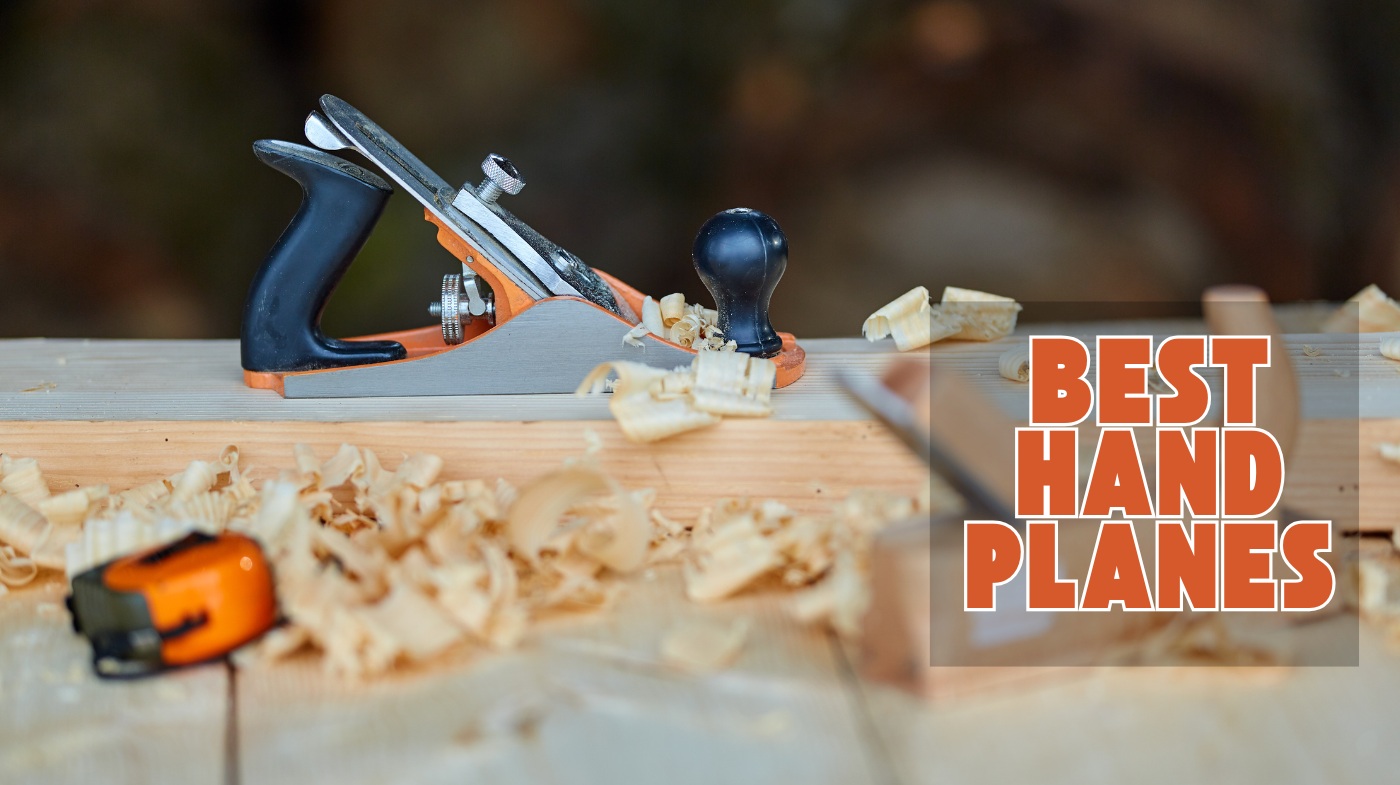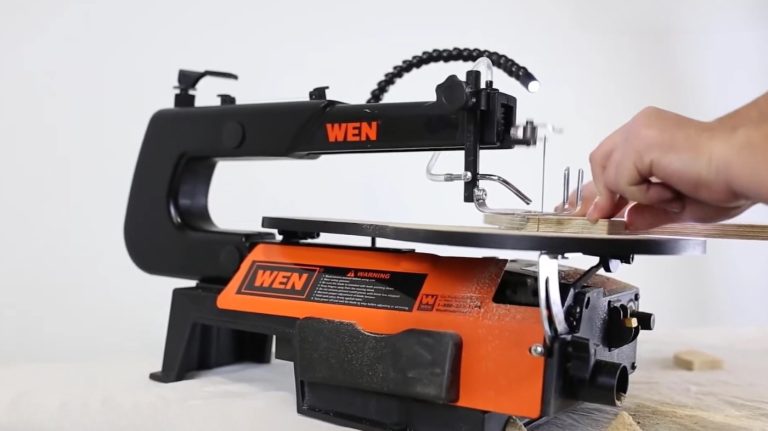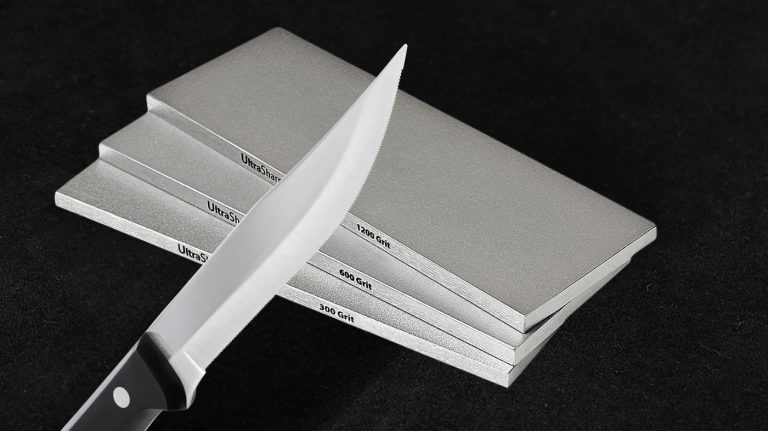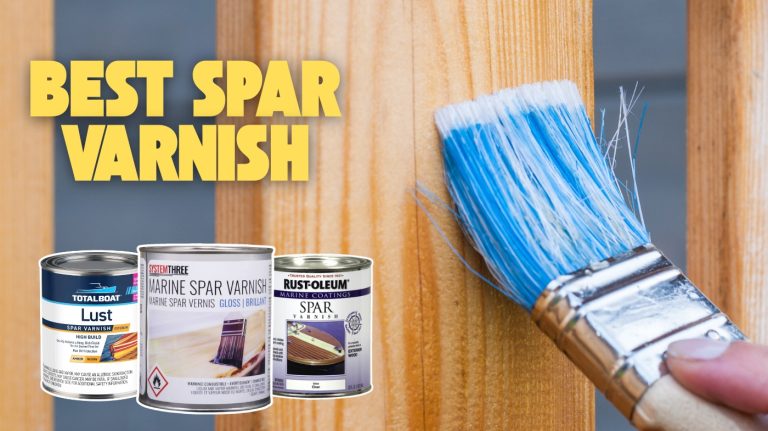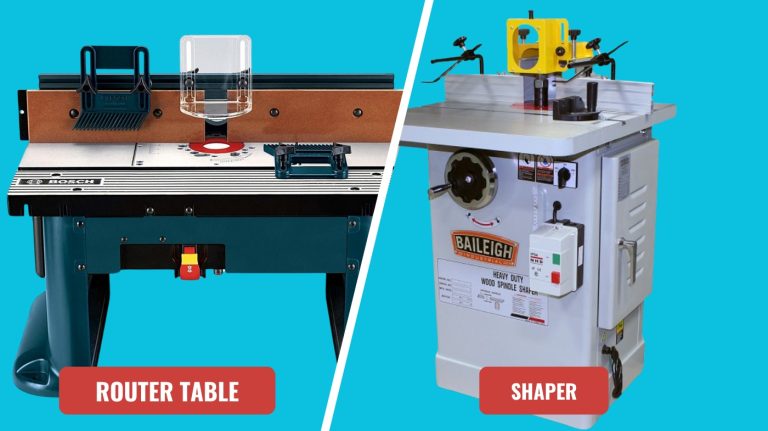Best Hand Planes: Precision Tools Every Woodworker Needs
If you want precision woodworking tools in 2025, consider the Amazon Basics No.4 for smooth finishing, KAKURI’s 42mm Japanese pull plane for detailed control, and JORGENSEN’s 3.5 Mini for fine trimming.
The JORGENSEN Chamfer Plane offers versatile edge shaping, while Spear & Jackson CBP65 is great for detailed carpentry after tuning.
Each delivers sharp blades, ergonomic handles, and durable bodies. Keep exploring to discover which plane suits your woodworking style best.
| Image | Name | Editor's Rating | Price |
|---|---|---|---|

|
Amazon Basics Woodworking Hand Planer - ...
|
|
|

|
KAKURI Japanese Hand Plane 42mm for Wood...
|
|
|

|
JORGENSEN 3.5" Mini Wood Planer - Mini H...
|
|
|

|
JORGENSEN Chamfer Plane, Edge Corner Pla...
|
|
|

|
Spear & Jackson CBP65 Carpenters 6 1/2 B...
|
|
Key Takeaways
- Amazon Basics No.4 offers durable cast iron construction and easy blade adjustment, ideal for hobbyists seeking precise finishing with minimal setup.
- KAKURI 42mm features a stable ECO Oak body and sharp high-carbon steel blade, perfect for detailed smoothing and authentic Japanese craftsmanship.
- JORGENSEN 3.5 Mini provides lightweight, ergonomic design with an adjustable O1 tool steel blade, excellent for fine, small-scale woodworking tasks.
- JORGENSEN Chamfer Plane includes multiple cutter heads and adjustable depth, making it versatile for detailed edge shaping on softwoods and hardwoods.
- Spear & Jackson CBP65 delivers precision with a cast iron body and adjustable brass screw, suited for detailed carpentry after proper tuning.
Amazon Basics Woodworking Hand Planer No.4 with 2-Inch Blade
- Professional quality: Durable cast iron body provides stability and strength;
- Excellent control: Impact-resistant plastic handle with contoured grip;
- Durable steel blade: Durable steel alloy blade makes quality cuts;
If you’re looking for a reliable hand plane that balances affordability with solid performance, the Amazon Basics Woodworking Hand Planer No.4 fits the bill perfectly.
You’ll appreciate its durable cast iron body that offers stability and reduces vibration during use. The impact-resistant plastic handle ensures a comfortable, secure grip, while the sharp steel alloy blade delivers clean, precise cuts.
Adjusting blade depth and angle is straightforward with its easy-to-use thumb screws, although they may require patience for fine tuning.
Weighing just 2.66 pounds, this planer is an excellent choice for hobbyists and DIY woodworkers.
Best For: Hobbyist woodworkers and DIY enthusiasts seeking an affordable, durable, and reliable hand planer for light to moderate use.
Pros:
- Durable cast iron body provides stability and reduces vibration for smooth planing.
- Sharp steel alloy blade delivers clean, precise cuts right out of the box.
Cons:
- Blade adjustment screws may have some play, requiring patience for fine tuning.
KAKURI Japanese Hand Plane 42mm for Woodworking (KANNA Block Plane)
- JAPANESE MANUAL WOOD PLANE "KANNA": This is a traditional Japanese woodworking plane, perfect for...
- COMPACT & EAST-TO-USE: Compact and lightweight, this mini plane is ideal for detailed work and...
- RAZOR-SHARP JAPANESE STEEL BLADE: The blade is crafted from Japanese high-carbon steel, sharpened by...
The KAKURI Japanese Hand Plane 42mm is a perfect choice for woodworkers seeking precise control and authentic craftsmanship in a compact tool.
You’ll appreciate its ECO Oak body, offering stability and smooth planing, combined with a sharp high-carbon steel blade designed for clean, thin shavings.
Unlike Western planes, you pull it toward you, making controlled cuts effortless. While it needs some initial setup like blade sharpening and sole flattening, its ease of adjustment and effectiveness on softwoods and hardwoods make it ideal for both beginners and pros.
Best For: woodworkers of all skill levels seeking a precise, authentic Japanese hand plane for smoothing and detailed woodworking tasks.
Pros:
- Durable ECO Oak body provides stability and smooth planing.
- Sharp high-carbon steel blade produces clean, thin shavings.
Cons:
- May require initial setup, including blade sharpening and sole flattening.
JORGENSEN 3.5 Mini Wood Planer for Woodworking and Craft
- Professional Level Blade: The blade is made of professional level O1 tool steel, improving cutting...
- Advanced Materials: The body is made of ductile iron to withstand heavy-duty use and is drop-tested...
- Adjustable Design: The cutting depth of this mini wood planer is adjustable, just turn the knob, you...
Woodworkers tackling small, detailed projects will appreciate how the Jorgensen 3.5 Mini Wood Planer fits comfortably in your hand while delivering precise control.
Its compact ductile iron body and ergonomic grip make trimming, polishing, and deburring effortless. You’ll benefit from the sharp, adjustable O1 tool steel blade that produces fine shavings for delicate tasks.
Though small for large surfaces, it excels in detailed work and fits easily in your toolkit. Minor adjustments like polishing the blade improve performance, but overall, this durable, lightweight mini planer offers excellent value and precision for crafts and small woodworking jobs.
Best For: Woodworkers and crafters who need a compact, precise hand planer for small, detailed woodworking tasks and fine trimming.
Pros:
- Durable ductile iron body with ergonomic grip for comfortable, controlled use.
- Sharp, adjustable O1 tool steel blade that produces fine shavings and can be resharpened.
- Lightweight and portable, easily fitting into toolkits for on-the-go woodworking.
Cons:
- Minor play in the blade adjustment mechanism may require occasional fine-tuning.
JORGENSEN Chamfer Plane with 4 Cutter Heads for Woodworking Edge Trimming
- Professional Level Blade: The blade is made of 9CrWMn, which is a professional level O1 tool steel,...
- Storage Space: JORGENSEN chamfer plane comes with storage space, the end of the product is where the...
- Polished Bottom & Ergonomic Appearance: The bottom is finely polished, very flat to ensure smooth...
Looking for a versatile chamfer plane that adapts to every edge shaping need? The JORGENSEN Chamfer Plane comes with four cutter heads—45° flat, 1/4 round, 1/8 round, and 3/16 round—offering diverse edge trimming options.
Its lightweight aluminum body and ergonomic grip ensure comfortable use, while built-in storage keeps blades secure. You can easily adjust cutting depth with a control knob for precise results.
Though it excels on softwoods, harder woods may require blade sharpening. With a smooth glide and sturdy design, this plane balances efficiency and convenience, making it ideal for both professionals and hobbyists aiming for clean, precise edges.
Best For: Woodworkers and hobbyists seeking a versatile, ergonomic chamfer plane with multiple cutter heads for precise edge shaping on a variety of wood types.
Pros:
- Lightweight aluminum body with ergonomic grip reduces hand fatigue during extended use.
- Includes four interchangeable cutter heads with built-in secure storage for versatile edge trimming.
- Adjustable cutting depth control knob allows for precise chamfering on softwoods and hardwoods.
Cons:
- May require blade sharpening upon purchase for optimal performance, especially on harder woods.
- Initial depth adjustment can involve trial and error to achieve the desired cut.
Spear & Jackson CBP65 Carpenters 6 1/2 Block Plane
- Ideal for end grain work and single handed operation
- Cast iron body
- Precision milled base and faces
Who needs a compact, reliable block plane for detailed carpentry and end grain work? The Spear & Jackson CBP65 Carpenters 6 1/2 Block Plane fits the bill with its cast iron body, precision-milled base, and adjustable brass screw for fine blade control.
You’ll appreciate its smooth operation and comfortable grip for small projects like shimming doors. However, expect some tuning—flattening the sole, sharpening the blade, and adjusting the mouth—to get ideal performance.
The factory blade steel is soft, so upgrading blades is wise. Overall, it’s a practical, affordable choice if you’re ready to invest time in customization.
Best For: DIY enthusiasts and hobbyist woodworkers who need a compact, affordable block plane for detailed carpentry and end grain work, and are willing to perform tuning and upgrades.
Pros:
- Compact size with a comfortable grip ideal for small projects and single-handed use
- Cast iron body with precision-milled base ensures durability and accuracy after tuning
- Fully adjustable mouth and brass screw allow fine control over blade positioning
Cons:
- Factory blade steel may be soft and dull quickly, often necessitating replacement blades.
Taytools Jack Smoothing Bench Hand Plane #5, 14-1/4 Inch Sole
- Body and frog made from nearly indestructible ductile cast iron
- Tote and knob are made from premium grade oiled and hand-rubbed Sapele
- Iron is 0.120” thick and 2” wide and made from tool steel hardened and tempered to 55-60
If you need a hand plane that combines durable construction with precision tuning right out of the box, the Taytools Jack Smoothing Bench Hand Plane #5 is an excellent choice.
Its 14-1/4 inch ductile cast iron body and precision-machined sole ensure stability and flatness within 0.003 inches.
You’ll appreciate the smooth, adjustable frog and sharp, hardened tool steel blade that produces wide, translucent shavings. The premium Sapele handle offers comfort during extended use.
While it may need minor tuning, this plane outperforms many budget models, making it ideal for smoothing, flattening, and fine woodworking tasks with reliable, high-quality results.
Best For: Woodworkers and hobbyists seeking a durable, precision hand plane for smoothing, flattening, and fine finishing tasks with minimal setup.
Pros:
- Precision-machined ductile cast iron sole ensures flatness within 0.003 inches for excellent performance.
- Sharp, hardened tool steel blade with adjustable frog provides smooth, wide, translucent shavings.
- Premium Sapele handle offers comfort during extended use and enhances tool aesthetics.
Cons:
- May require minor tuning out of the box, such as sharpening and chip breaker adjustment.
JORGENSEN No.4 Wood Planer Hand Plane for Woodworking
- Professional Level Blade: The blade is made of professional level O1 tool steel, improving cutting...
- Advanced Materials: The body is made of ductile iron to withstand heavy-duty use and is drop-tested...
- Adjustable Design: The cutting depth of this wood planer is adjustable, just turn the knob, you can...
Wondering which hand plane suits your precision woodworking needs without breaking the bank? The JORGENSEN No.4 Wood Planer is a solid choice.
With its durable ductile iron body, beechwood handle, and adjustable mouth, it offers versatility from fine smoothing to rough shaping.
The sharp O1 tool steel blade cuts efficiently, while the ergonomic design guarantees comfort during use. Weighing just under 5 pounds, it delivers smooth, precise results out of the box, though minor tuning may be needed.
Best For: Woodworkers and DIY enthusiasts seeking an affordable, durable, and versatile hand planer for precision smoothing and shaping tasks.
Pros:
- Durable construction with a ductile iron body and beechwood handle for comfort.
- Sharp, professional-grade O1 tool steel blade ensures efficient and precise cutting.
- Adjustable mouth and cutting depth knob offer versatility for various woodworking needs.
Cons:
- Weighs nearly 5 pounds, which may be heavy for extended use.
- May require some initial tuning and minor adjustments out of the box.
9 Adjustable SpokeShave with 4 Blades Woodworking Hand Planes Tool
- ❤High Quality---Our spokeshave is made of premium alloy steel with a high temperature quenched...
- ❤Design Reasonable---The use of double-screw adjustment screw, you can easily adjust the planing...
- ❤Perfect Size---With a blade width of 43mm/1.7 inches and a total length of 21.5cm/8.46 inches,...
Looking for a versatile hand plane that adapts to various woodworking tasks? The Adjustable Spokeshave with 4 Blades is perfect for shaping, smoothing, and trimming curved or flat wood surfaces.
You’ll appreciate its double-screw adjustment and precision knobs for controlling planing thickness exactly how you want.
Made from durable alloy steel and cast iron, it offers excellent stability and wear resistance. Its ergonomic dual handles ensure comfortable, efficient use whether pushing or pulling.
Plus, it comes with four spare blades, so you’re always ready. Just remember to keep blades sharp and handle them safely for best results.
Best For: Woodworkers and carpenters of all skill levels seeking a reliable, adjustable hand plane for shaping and smoothing curved or flat wooden surfaces.
Pros:
- Durable construction with high-quality alloy steel and cast iron for stability and wear resistance.
- Adjustable double-screw mechanism and precision knobs allow fine control over planing thickness.
- Ergonomic dual handles provide comfortable and efficient use for both push and pull planing motions.
Cons:
- May require regular blade sharpening and careful handling due to its sharp edge.
- May not be suitable for planing non-wood materials.
Comparison Table for Top Hand Planes
| Hand Plane Model | Blade Material | Body Construction | Blade Width | Weight | Best Use |
|---|---|---|---|---|---|
| Amazon Basics No.4 | Steel alloy | Cast iron | 2 inches | 2.66 lbs | Smooth finishing |
| KAKURI 42mm Japanese | High-carbon steel | ECO Oak | 42mm (1.65″) | Lightweight | Detailed smoothing |
| JORGENSEN 3.5 Mini | O1 tool steel | Ductile iron | Small | Lightweight | Fine trimming |
| JORGENSEN Chamfer | 9CrWMn steel | Aluminum | Multiple heads | Lightweight | Edge shaping |
| Spear & Jackson CBP65 | Steel | Cast iron | Standard | Compact | End grain work |
| Taytools Jack #5 | Tool steel | Ductile cast iron | 2 inches | 5.45-6.6 lbs | Smoothing & flattening |
| JORGENSEN No.4 | O1 tool steel | Ductile iron | Standard | Under 5 lbs | Precision smoothing |
| Adjustable Spokeshave | Alloy steel | Cast iron | 43mm (1.7″) | Medium | Curved surfaces |
Best Hand Planes Buying Advice: Things to Keep in Mind
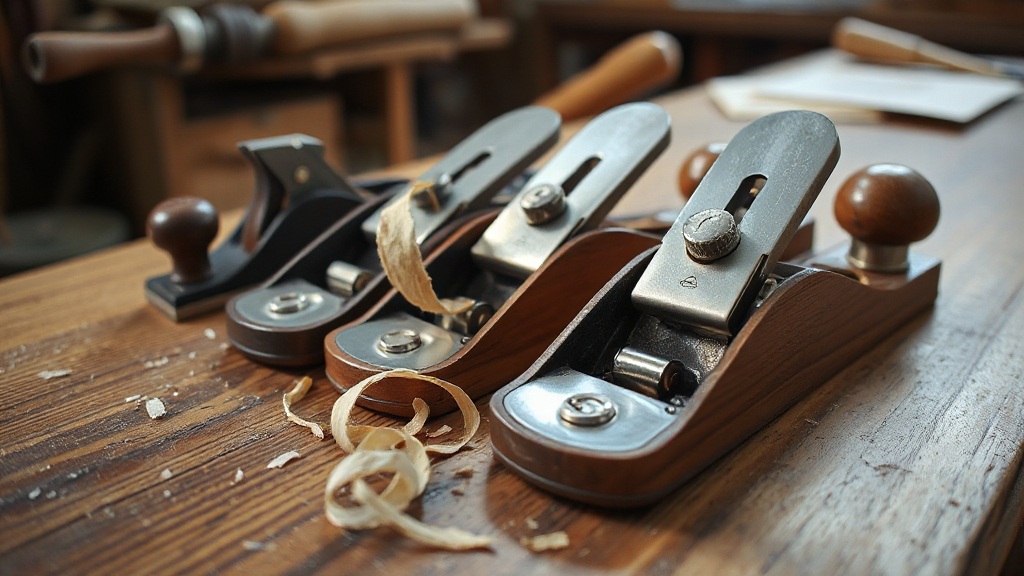
When choosing a hand plane, you’ll want to focus on some key factors like:
Blade Material Quality
How does the quality of a hand plane blade affect your woodworking precision? It’s essential because high-quality blades—usually made from carbon, high-carbon, or tool steel—offer sharper edges and longer durability.
You want a blade with a Rockwell hardness of 55-60 to keep that edge steady during planing. Proper heat treatment and tempering balance hardness with toughness, so your blade won’t chip or dull quickly.
When you choose quality steel, you sharpen faster and get a finer edge, making your work smoother and more accurate.
On the other hand, softer or lower-grade steels dull faster, forcing frequent sharpening and reducing your planing consistency. So, investing in a well-made blade directly boosts your precision and efficiency in woodworking.
Plane Body Construction
Although blade quality plays a vital role, the plane body construction directly impacts your control and comfort during woodworking.
You should look for bodies made of durable materials like cast or ductile iron to guarantee stability and long-lasting use. A flat, precisely machined sole is essential for smooth, consistent planing and easy adjustments.
High-quality adjustment mechanisms let you fine-tune blade depth and angle accurately, without unwanted play. Choosing a lightweight yet sturdy plane body can reduce fatigue while maintaining stability, helping you work longer with precision.
Finally, make certain the plane is well-assembled with minimal manufacturing imperfections, so it performs better and is easier to tune. This solid construction foundation enhances your overall woodworking experience.
Handle Comfort Design
Three key factors make handle comfort design essential for hand planes: reducing fatigue, enhancing control, and guaranteeing a secure grip.
When you choose a plane, look for ergonomic handles that fit your hand’s natural contours to prevent slipping and discomfort during long sessions.
Handles made from impact-resistant plastic or polished wood offer both durability and a pleasant feel, helping you maintain grip stability.
The size and placement of the handle also matter—they influence leverage, so a well-positioned handle lets you plane with less effort.
Some models even feature adjustable or cushioned handles, letting you customize fit and comfort to your hand size and work style.
Adjustment Mechanism Precision
Comfortable handles help you maintain control, but precise adjustments take your woodworking to the next level. When choosing a hand plane, pay close attention to the adjustment mechanism’s precision.
You want threaded screws or knobs that let you fine-tune blade depth and angle with micrometer-level accuracy. Avoid mechanisms with play or backlash, as they make it tough to get consistent cuts, especially on delicate projects.
Smooth, high-quality threads and locking components ensure responsive adjustments without slipping. A precise adjustment system lets you make incremental changes easily, so you can adapt to different woods and finishes without overshooting or constant readjustments.
Sole Flatness Importance
When you choose a hand plane, the flatness of its sole plays a crucial role in your results. A perfectly flat sole ensures consistent contact with the wood, giving you a smooth, even finish every time.
Even slight imperfections can cause uneven planing, leaving ridges or dips on your workpiece. High-quality planes usually have soles ground to within 0.003 inches of flatness, which boosts your precision considerably.
To keep your plane performing its best, check and flatten the sole regularly. If the sole isn’t flat, you’ll find yourself putting in extra effort and losing control, both of which hurt the quality of your project.
Weight and Balance
Although selecting a hand plane with the right weight and balance might seem straightforward, it directly affects your control and fatigue levels during use.
Proper weight distribution ensures stability and smoother operation, letting you work longer without tiring. A balanced plane spreads its weight evenly between the body and cutting mechanism, improving precision and ease of movement.
Heavier planes give you momentum for cutting, but they can wear you out faster, especially during extended sessions. On the other hand, lighter planes offer agility and excel at delicate tasks, though they demand more effort for removing material efficiently.
Pay close attention to ergonomic factors like handle and weight placement; these greatly influence your comfort and accuracy. Choosing the right balance helps you maintain control and finish your woodworking projects with confidence.
Blade Sharpening Ease
Weight and balance help you control your hand plane, but maintaining a sharp blade keeps your cuts precise and smooth.
When choosing a hand plane, look for one with easily accessible blades that you can sharpen using standard tools like stones or honing guides.
Adjustable blades with clear mechanisms simplify keeping a consistent edge, cutting down the hassle of sharpening. The blade material matters too—high-carbon or alloy steel lets you achieve a fine edge more quickly.
A low-angle or adjustable mouth design gives better access to the cutting edge, making maintenance easier. Finally, planes with standardized blade sizes and straightforward assembly speed up sharpening and blade replacement, so you spend less time setting up and more time crafting perfect surfaces.
Suitable Wood Types
Since different woods vary in hardness and grain, choosing the right hand plane depends on the type of wood you’ll be working with.
Hardwoods like oak, maple, and walnut demand sharp, high-quality blades and a sturdy plane to avoid tear-out and achieve smooth finishes. Softwoods such as pine and cedar are more forgiving, allowing you to use less aggressive blades—perfect if you’re just starting out.
For dense exotic woods like rosewood or ebony, you’ll need specialized blades or more frequent sharpening because of their hardness and complex grain.
Avoid using traditional hand planes on plywood or composites; they can dull blades quickly and cause splintering. Always plane with the grain when possible, as this guarantees cleaner cuts, especially in woods with coarse or irregular grain patterns.
Frequently Asked Questions
How Do I Maintain and Sharpen My Hand Plane Blades?
To maintain and sharpen your hand plane blades, start by regularly cleaning them to prevent rust. Use a honing guide to keep the blade angle consistent while sharpening on a whetstone or sharpening system.
Begin with coarse grit, then progress to finer grits for a razor-sharp edge. After sharpening, remove burrs with a leather strop. Finally, apply a thin layer of oil to protect the blade, ensuring smooth and precise cuts every time.
What Safety Precautions Should I Take When Using Hand Planes?
When using hand planes, always wear safety glasses to protect your eyes from wood shavings. Keep your fingers away from the blade path, and maintain a firm grip for control.
Make sure the blade is sharp and properly secured to avoid slips. Work on a stable surface and clamp your wood securely. Don’t rush—planing slowly helps prevent accidents. Ultimately, store your plane safely with the blade retracted to avoid injuries.
Can Hand Planes Be Used on Hardwoods and Softwoods Equally?
You can definitely use hand planes on both hardwoods and softwoods, but you’ll need to adjust your technique. Hardwoods are denser, so you’ll want a sharper blade and may need to take thinner shavings to avoid tear-out.
Softwoods are easier to plane but can dent or chip if you apply too much pressure. Keep your blade sharp and adapt your approach depending on the wood’s hardness for the best results.
How Do Environmental Conditions Affect Hand Plane Performance?
You might think hand planes work the same everywhere, but environmental conditions definitely affect their performance. When humidity’s high, wood swells, making it harder to get smooth cuts.
If it’s dry, wood shrinks, causing gaps or tear-out. Temperature changes can also impact your plane’s metal parts, leading to expansion or contraction that alters blade alignment.
So, you’ll want to adjust your technique and maintenance based on the environment to keep your results precise.
Are There Specific Hand Planes Recommended for Left-Handed Users?
If you’re left-handed, finding hand planes designed for you can really improve your control and comfort. Some manufacturers make left-handed models with the blade and handles reversed, so you can push naturally without awkward wrist angles.
Also, certain adjustable planes let you switch the blade orientation, giving you flexibility. Don’t hesitate to try different styles to see which fits your grip and woodworking style best.
Find the Hand Plane That Elevates Your Craft
Choosing the right hand plane is like picking the perfect brush for your woodworking masterpiece—it shapes your vision with precision and ease.
Whether you’re smoothing edges or crafting intricate details, these top hand planes offer reliable performance to match your skill.
Keep your project’s needs and your comfort in mind, and you’ll carve out beautiful results every time. With the right tool in hand, your woodworking will truly take flight.
Last update on 2025-12-06 / Affiliate links / Images from Amazon Product Advertising API

